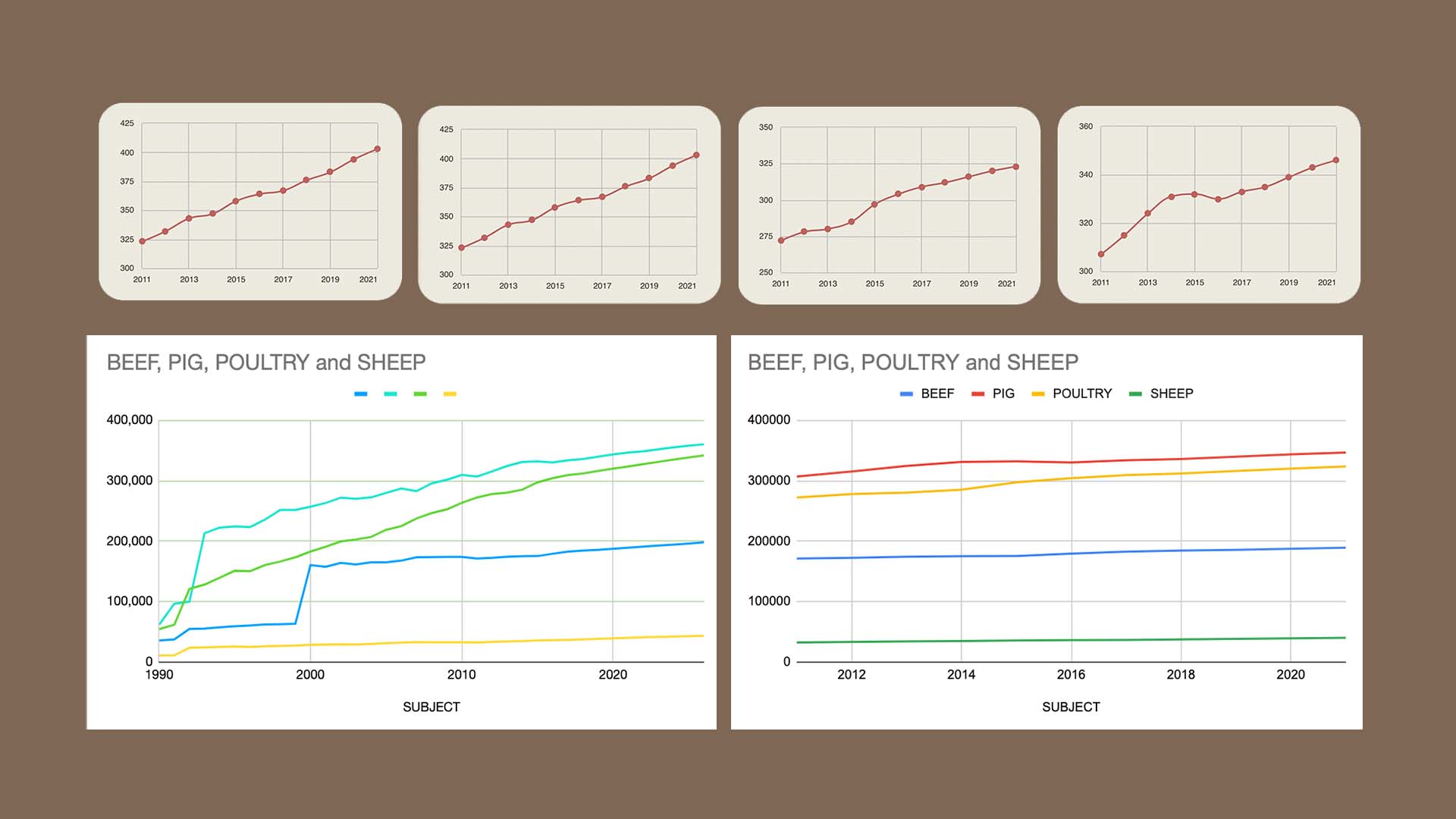Data
Rising global meat consumption is likely to have a devastating environmental impact, scientists have warned.

Introduction
Meat consumption is a byproduct of the higher living standards we humans are now used to. However, we are completely disconnected with how the food we eat is produced and raised and hence unaware of the consequence our diet has on the planet and its climate. While we are bothered by the prices of meat going up, we neither know nor care about livestock production process and the issue with its sustainability. Compared to other food commodities, meat is characterized by high production costs, high output prices, high ecological footprint and much cruelty to innocent animals. With the increase in the disposable income of citizen in developed nation, the demand for meat has also gone up. Meat is no longer an occasional delicacy but has instead become a part of our daily diet. While the global meat industry provides food and a livelihood for billions of people, it also has a significant environmental consequence for the planet which means it won’t be sustainable long term.
Data Visualisation
Line graph would be most appropriate to accurately represent my data. As each of the data points are vital to be compared with each other, it is connected by straight line segments. Especially with the amount of data, the dots can help emphasize/pinpoint the exact point across the time (years). The 4 main colours are from the same shade, but differentiating lightness, The darkness colour represented the heaviest amount of the type of meat consumed. The lightest colour then represented the least. The background colour is adjusted to cream white to keep the cohesiveness of the colour palette also not too noticeable to present the data. Text is kept back to emphasize the importance.

Conclusion
Meat demand is associated with higher incomes and a shift - due to urbanisation - to food consumption changes that favour increased proteins from animal sources in diets. While the global meat industry provides food and a livelihood for billions of people. Poultry and Pork are closely the most common meat consumed followed by Beef and finally muttons. The increasing demands of the meat industry is steadily increasing but the ranking of the meat did not change over the course of 10 years. However, between 2013-2016 there is a small spike/bump increase as compared to the rest of the years.
References
- Ritchie, Hannah, and Max Roser. “Meat and Dairy Production.” Our World in Data, 25 Aug. 2017, ourworldindata.org/meat-production.
- “The World Counts.” Theworldcounts.com, 2021, www.theworldcounts.com/challenges/consumption/foods-and-beverages/world-consumption-of-meat/story.
